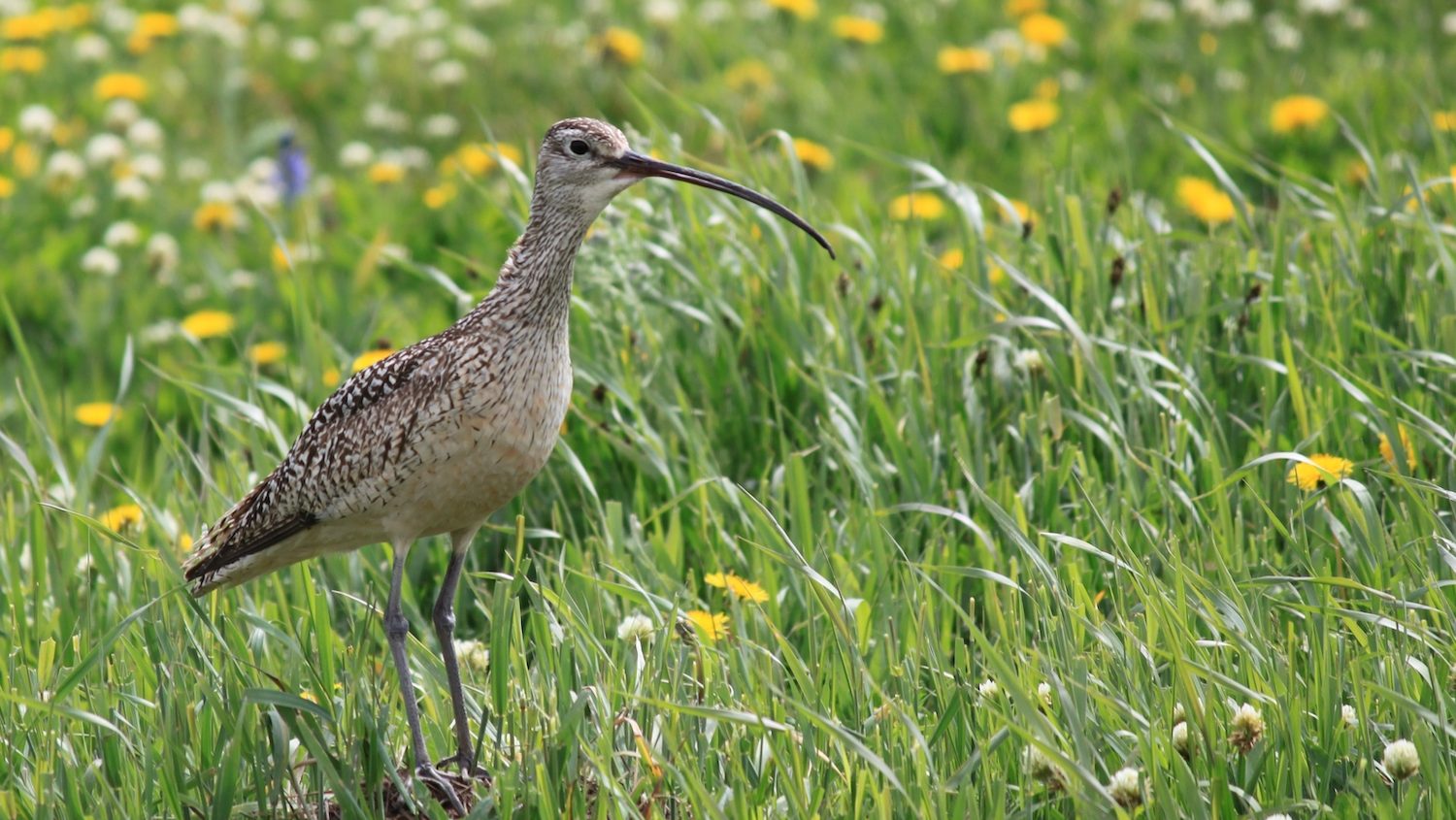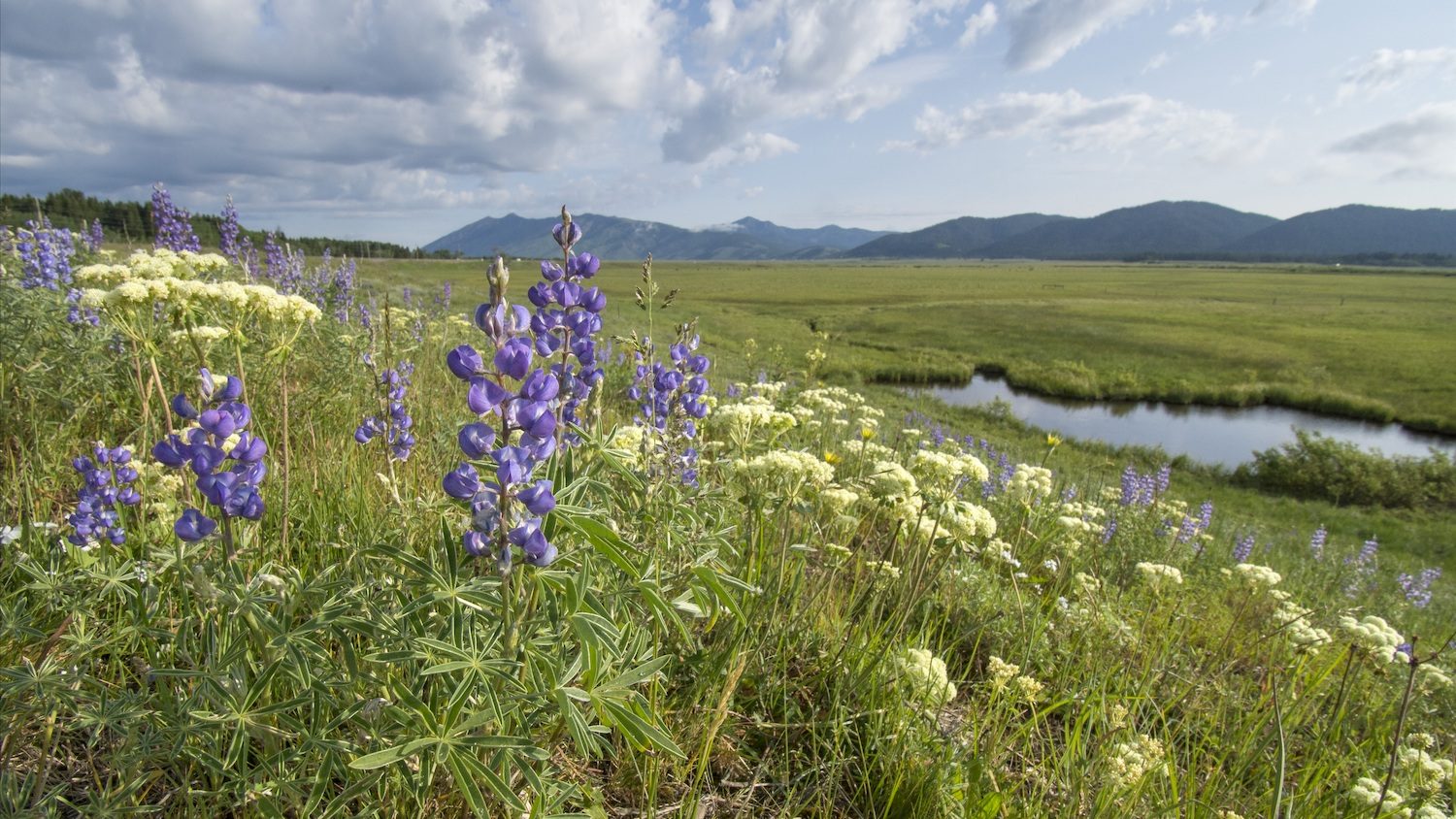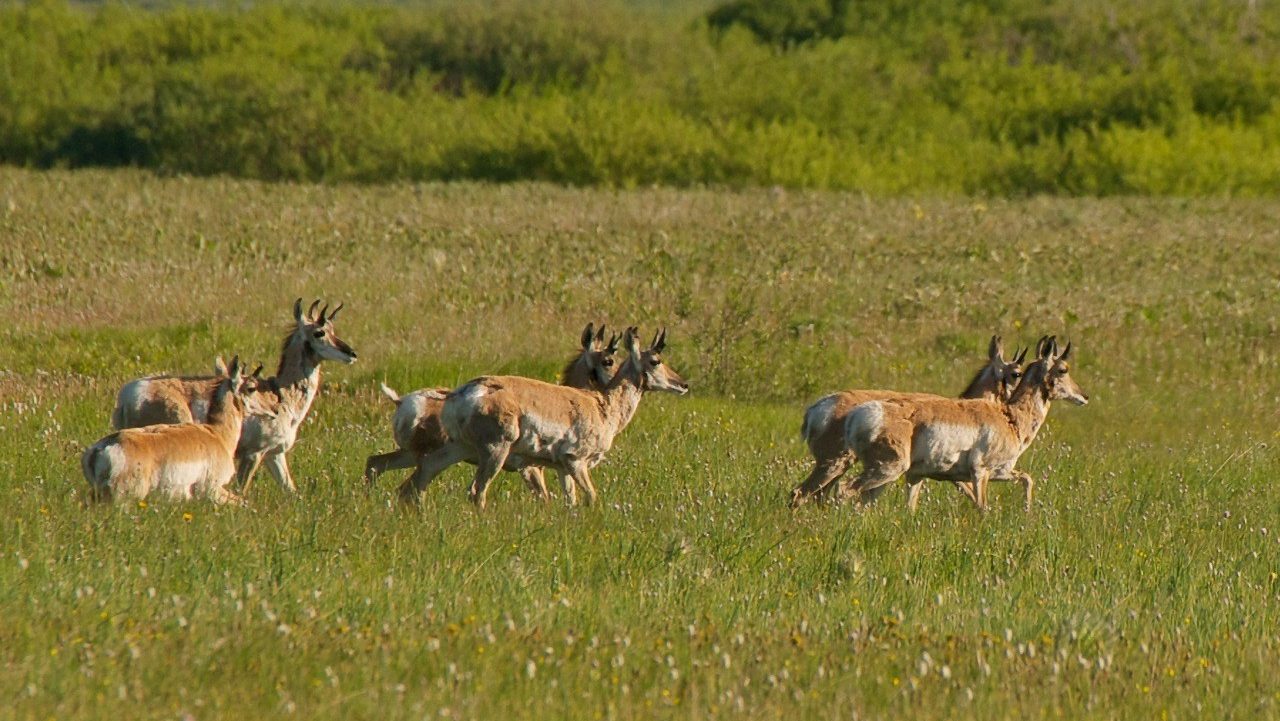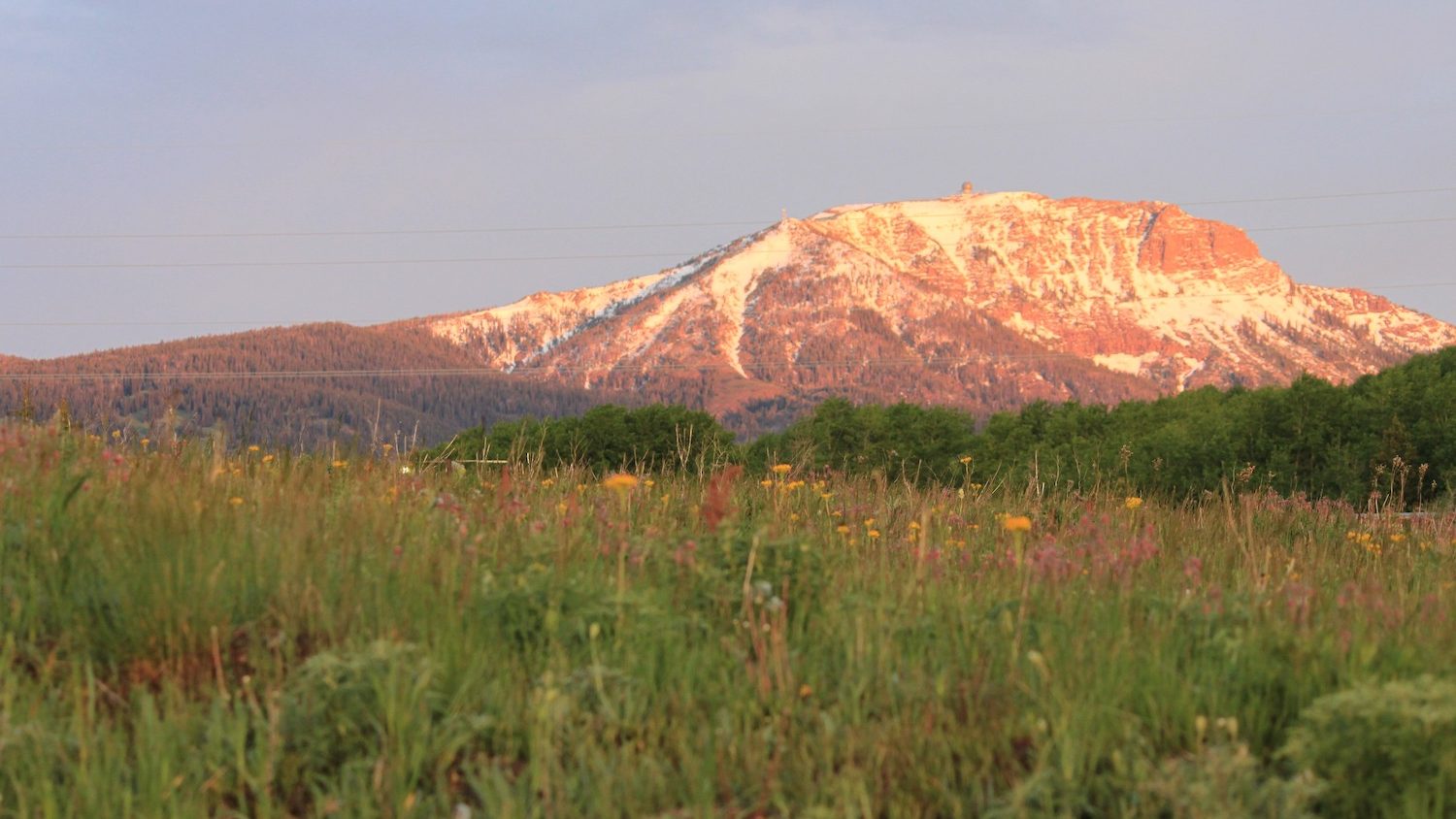On the outskirts of Yellowstone National Park, there’s a haven for herds of wildlife in eastern Idaho’s high country. It’s a moisture-rich refuge in early summer when meadows are free of snow while peaks still cradle white caps for future flow.
“The ranch is gorgeous,” says Matthew Ward, The Nature Conservancy Henry’s Fork Watershed Manager. “Flowers are starting to bloom. There are no leaves on the willows or aspen trees yet, but it is certainly green and wet.”
The Nature Conservancy’s 1,600-acre Flat Ranch Preserve is so hydrated, it smells green. And looks even greener. Vibrant emerald dominates the undeveloped landscape with sporadic splashes of sunshine-colored balsamroot and purple-painted camas decorating nature’s canvas. On the fringe, the palette fades to marshy, muted browns that are perfect for camouflaging one of the largest nesting populations of long-billed curlew in the state.

“You have this awesome grassland habitat that’s wet and productive,” says Jay Carlisle, Intermountain Bird Observatory research director. “Birds eating worms and getting them at a pretty fast rate so they’re fairly able to get enough food. We have a high density of birds here.”
To call this high-density hideout flat is accurate, but misleading. Flat Ranch Preserve is in a valley called Henry’s Flats, or the flats, and it is indeed flat, but not flat for as far as the eye can see. It is surrounded by heavily timbered mountains. Some claimed by Montana, others by Wyoming, but all of them funnel large mammals into Idaho.
“We’ve made a lot of effort to work with neighboring states, but there’s room for improvement when it comes to mapping migration,” says Shane Roberts, Idaho Department of Fish and Game wildlife bureau chief. “For those migratory animals, open spaces are crucial. From the animal’s perspective that’s always been important, but from our perspective that’s becoming more important.”

Pronghorn On the Move
As monitoring the movements of GPS-collared animals becomes more scientifically precise, our understanding of where the wild actually goes improves. Those pronghorn, casually grazing so far from civilization that they’re miraged by heat waves when spotted them from the porch at the ranch’s visitor center, look made for the scene.
It’s easy to assume the speedy, and easily spooked, animals will never leave. But they will. So will the moose, deer, elk and grizzlies that also visit the ranch. They have to. They cycle through just like the seasons.
The highway through the flats has some of the highest vehicle-wildlife collision rates in the state. There’s a lot of mammal movement in the area to say the least. That’s why biologists have always suspected that Flat Ranch Preserve was an important migration stop, but now they know for certain it is.
Montana Department of Fish, Wildlife and Parks put trackable collars on pronghorn in the winter. Those animals end up in Idaho in the summer. The ranch is the halfway point for their estimated 120-mile migration from Ennis, Montana to Harriman, Idaho.

“What I was surprised most of is how far south the pronghorn go,” Ward says. “Pronghorn cross rivers and I still can’t figure out how they avoid trees with the way they go. I’ve never seen them go into the forest or willows. They are always out in the open.”
We think pronghorn stay out in the open because that’s where we see them, but the Montana-Idaho route is anything but open. If it’s not miles of barbwire fence tripping up their anti-jump stance, it’s thick forest obstructing their specialized, nearly 360-degree vision.
“They may not be destined for trees, but they certainly navigate through them,” Roberts says. “We have many surprising places we do not expect to find pronghorn and we find pronghorn.”
Pressure is partly to blame for those surprise finds. Pronghorn have a destination in mind, usually open meadow, flat grassland or sagebrush steppe. That destination does not change but the route to it might, especially as more humans move in on what pronghorn have migrated through for millennia.
“Certain types of fencing can be just as much of a barrier as a subdivision,” Roberts says. “On the flip side, some animals will walk through a subdivision to get to where they want to go. That’s not optimal.”

Room to Roam?
The preserve flourishes in the rural ranch-and-recreation region of Idaho known as Island Park. Island Park neighbors Yellowstone National Park and Grand Teton National Park. The world-famous Henry’s Fork of the Snake River runs through it. Passionate locals rely on it. Many weekend visitors also enjoy it. There’s no turning off interest now. The reality is, Flat Ranch would be a subdivision today if The Nature Conservancy hadn’t bought it in 1994.
“Development comes with fences, houses, even air stirps. Those are all things pronghorn are going to avoid,” Ward says. “It’s death by 1,000 cuts, but they have the flats until the rest of the flats get developed.”
With tug-of-wars erupting over modifying the highway and building an airstrip plus more hotels and subdivisions, Flat Ranch is quickly becoming one of the last open spaces in the area that grassland game like pronghorn can count on as they move from one state to another for their survival.
“Every little thing is adding up to a result that is not going to support migration,” Ward says. “If we want to live in a world with wildlife populations that are wild and free to roam, it’s important to protect migration corridors. I would think most people in North America would agree wildlife is important and we want to protect them. We don’t want to see wildlife disappear.”
